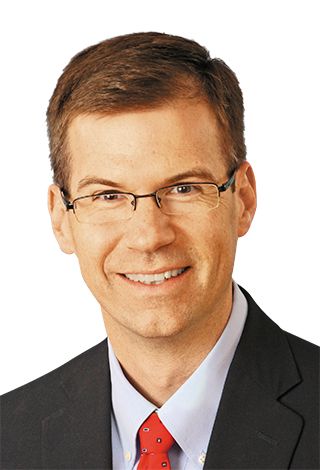Article
BLOG: From family practice to urology practice: One PA’s journey
New Urology Times blogger Kevin Wayne, PA-C charts his path to becoming a urology physician assistant.

When I was in physician assistant school almost 20 years ago, I had the singular goal to be the best primary care physician assistant ever. My focus was family medicine, the thrust of most PA programs, and I envisioned taking competent care of individuals from cradle to grave. Family medicine was appealing to me given its broad purview, and it satisfied my desire to know something about nearly all aspects of medicine. Following graduation, I took a job in a small family practice, coupled with a position in a busy, suburban emergency department. After 1 year, I joined the ranks of the U.S. Public Health Service’s National Health Services Corps, and was posted in a rural health clinic in an underserved, agricultural area of California’s sprawling San Joaquin Valley.
At the conclusion of my 2-year commitment with the NHSC, I was enlisted by a local six-man urology group as their first mid-level provider. None of us was exactly sure about what I’d be doing, and the transition from being a fairly autonomous primary care medical provider to a very dependent practitioner in a surgical specialty was difficult. My first 6 months were unsatisfying, as I was tasked with running the practice’s erectile dysfunction clinic and had few other clinical responsibilities.
Realizing that my role with the practice had never been chiseled in stone, I began a vigorous period of self-study in urology that also included attaching myself to a urologist in the group who showed an interest in teaching and mentoring. Initially, I gleaned information about urologic conditions from the primary care books and publications that I was already familiar with. These sources proved to be adequate primers in urologic diseases, but fell short of what a “specialist PA” should know. I soon became acquainted with “Smith’s General Urology” and then “Campbell’s Urology” (then only three volumes).
My appetite to build a formidable urologic fund of knowledge became insatiable, and my love for urology began to blossom. This self-study, coupled with close mentoring as I saw patients in tandem with my supervising urologists, secured my desire to provide urologic services to my community. The broad brushstroke of pathologic entities that encompasses urology is stimulating, and the specialty’s penchant for developing and adopting new medical technologies is exciting.
Over the nearly 12 years I spent with that group, my responsibilities evolved to include my own clinics, independently staffing our satellite offices, performing hospital consultations and rounds, first assisting in the full range of urologic procedures, participating in weekend call, and serving as a sub-investigator for clinical trials testing new urologic drugs and devices. And, while I still did the lion’s share of work for our ED patients, this became but a part of the full spectrum of urologic problems that I was now competent in evaluating and treating.
Currently, I’m one of eight physician assistants working at USC’s Institute of Urology. This position satisfies my desire to work in a state-of-the-art, tertiary care urology department, alongside some of the leaders in the field. The patients here are challenging and invigorating, and I feel privileged to help care for some of the most complex urologic patients I have seen in my 15 years of urologic practice.
I’m forever grateful to my early mentors in urology, and can’t imagine ever practicing in another specialty.
To get weekly news from the leading news source for urologists, subscribe to the Urology Times eNews.




